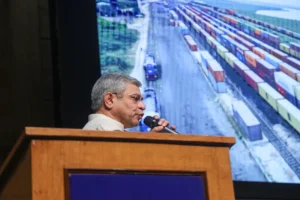
Kailasavadivoo Sivan
According to Kailasavadivoo Sivan, a former head of the Indian Space Research Organisation, the lander Vikram on the Chandrayaan-3 spacecraft will be in “automatic mode” once the deboosting manoeuvre starts and will decide how to carry out its tasks based on data and its own intelligence.
He stated, “There is no interruption from the ground.”
The lander would function in accordance with the system intelligence, according to Mr. Sivan, who said that sensors and other systems always have a degree of redundancy.
At 4 o’clock in the afternoon today, the lander Vikram successfully finished a deboosting manoeuvre. Yesterday, it had cut its voyage to the Moon off from its propulsion module.
Concerning what happens next before touchdown, Mr. Sivan stated that the lander’s trip from orbit, at a speed of 2 km/sec, needs to be precisely decreased to zero when it strikes the moon’s surface. It is a crucial and important measure, he declared.
After the moondust has settled for two hours, the “Pragyaan” rover will emerge from the lander, he added.
According to Mr. Sivan, improvements have been made after carefully examining all of the Chandrayaan-2 mission’s mistakes to create a reliable system that will guarantee success regardless of the flight’s circumstances. Redundancy was introduced wherever it was lacking in the propulsion, navigation, and control systems, which, according to him, will assist save the sensors in case of difficulty.
The South Pole region of the Moon, also known as the shadow region, has not yet been investigated, and new scientific discoveries are anticipated by conducting tests there, according to the previous ISRO chief. Since other nations can use the data for their own tests, the “new science” will be beneficial not only for India but for the entire world.
Next Wednesday is when the Vikram lander is anticipated to make contact with the lunar surface.
Cameras on the Vikram Lander captured the first pictures of the moon’s surface shortly after it separated from the propulsion module on August 17. It is possible to clearly discern the cratered and pitted surface of the moon. It also implies that the Vikram lander’s systems appear to be operating normally.
Following the moon landing, the rover will gather information on the make-up and geology of the lunar surface, opening the door for further investigation.
To read more such news, download Bharat Express news apps


















